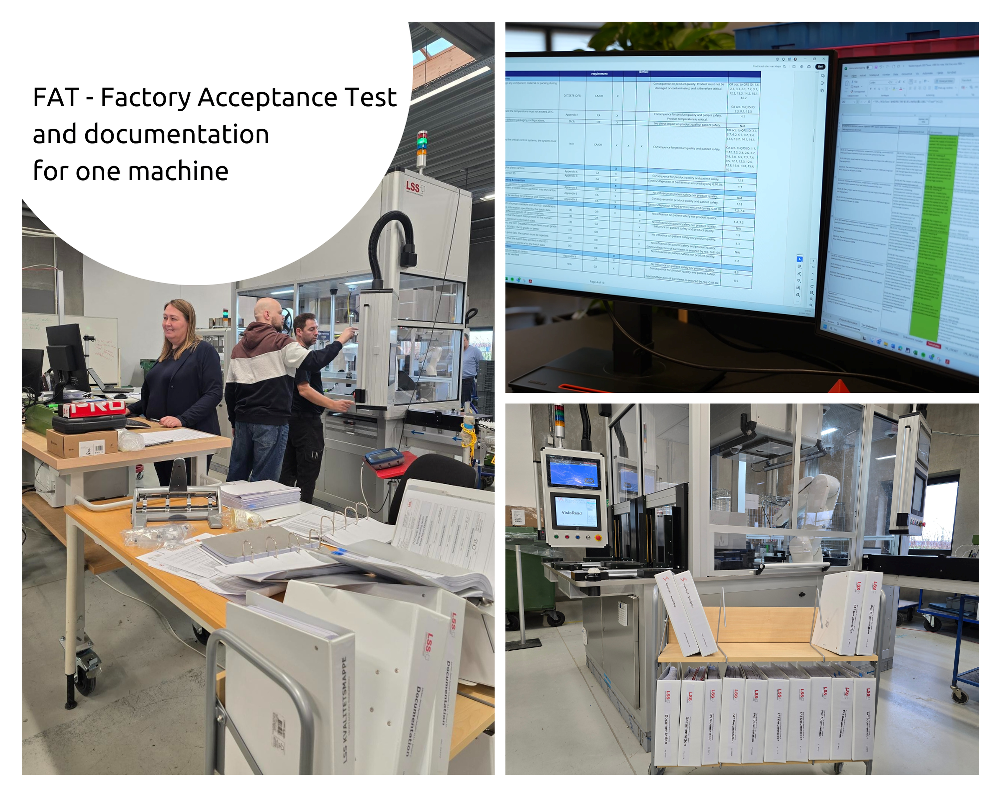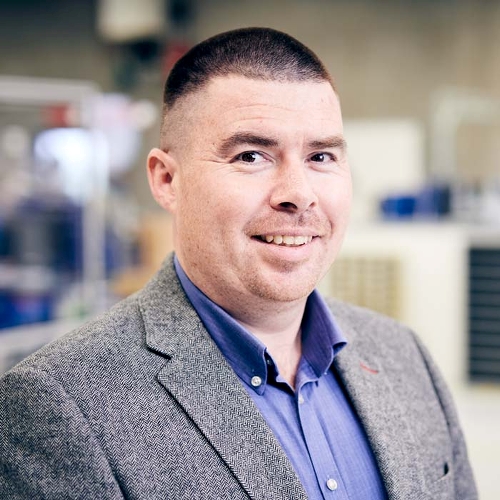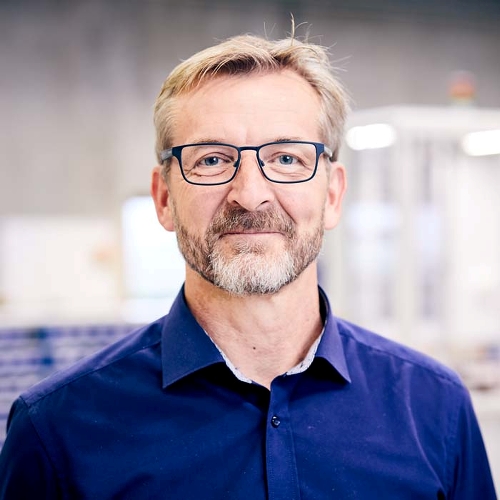High precision syringe labeller
When providing labelling solutions become more than just high-precision labelling
Since Autumn 2023, we have been working in our workshop on a large-scale project for a major Danish pharmaceutical company. The project involves two production lines, each with a vial labeller and a syringe labeller.
For these two lines, featuring four labelling units in total, infeed tray handling and comprehensive documentation have been significant aspects of the project, alongside achieving high-precision labelling.
Highly advanced robotic solution for infeed of vials
The vials are placed in the infeed module in trays, stacked five trays high. A vision camera inspects the entire tray and sends the X/Y coordinates of the vial with the highest Y coordinate to the robot, which picks it up and places the vial on the infeed conveyor to the labelling station. When a tray is empty, the robot arm also transfers the empty tray to the designated empty tray station.
CCTV cameras for a compliant operation and future-extended functionalities
CCTV cameras are installed in all four machines as mandated by the customer for all their production equipment. The primary purpose of these cameras is to monitor the production process and enable a review of events in case of a failure, allowing the root cause to be identified.
In the future, these cameras are expected to support functionalities such as camera-assisted line clearance, machine learning, and data capture for the creation of digital twins of the pharmaceutical products.
Documentation, test plans and FAT
A huge part of our projects is the documentation, test plans and performing of the FAT (Factory Acceptance Test). We experience that the demand for documentation from our customers in the pharmaceutical industry is increasing to meet the legislation regulations.
- Our validation documentation is according to the cGMP and the GAMP 5 regulations
- The documentation certifies that the equipment has been designed, built and operates according to the customers URS requirements
- The validation packages are composed by DS, DQ, IQ/OQ and FMEA risk analysis

For the four machines—two vial labellers and two syringe labellers—LSS employees, alongside 20 representatives from our customer, have participated (or will participate) in FAT and IT FAT at our facility.
We anticipate that the FAT for each machine will take one week, running from early morning until late evening. The two machines for line one are already FAT approved and signed. FAT for the final two machines is scheduled to be completed just before Christmas. The best Christmas present for all of us at LSS will be the successful FAT approval of the last two machines, with all documentation signed.
Would you like to know more about our pharma labelling solutions
Contact our experts


